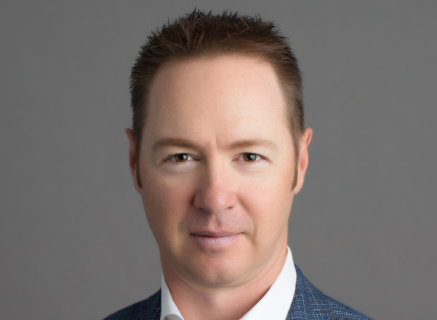
Brandon Robinson
Horizon Aircraft is a Canadian startup seeking to develop and certify a piloted, five-seat hybrid-electric vertical-takeoff-and-landing (eVTOL) air taxi. Dubbed the Cavorite X5, the aircraft is distinguished by its fan-in-wing design, with 12 electric lift fans embedded in the wings and four in the canard foreplanes. In a recent conversation with the AAM Report, Horizon co-founder and CEO Brandon Robinson discussed the company’s design philosophy and certification strategy. A partial transcript follows:
AAM Report: What is the advantage of going with the fan-in-wing design?
Robinson: There are always going to be engineering trade-offs when it comes to designing an aircraft. We decided to take a slight hit on the takeoff and landing phase from a power consumption perspective, in order to get a machine that would be the most-efficient, highest-speed, safest configuration possible for the 98% of the time that it’s flying enroute. Now, there’s hardware loaded in the wings which makes them a bit heavier, but once you’re airborne, that extra weight is, structurally speaking, relatively free. So, basically, we wanted a configuration that would allow for a VTOL capability, but then return to fly like a normal aircraft en route, which we felt was the best and most efficient configuration.
The company recently wrapped up wind tunnel testing with a half-scale model of the Cavorite. How did it perform against your expectations?
Actually, the aircraft performed much better than expected. So, one of the things we were concerned with about our particular configuration was the possibility of pitch-up moments, which are well documented when the wings are in the open position [during takeoff and landing]. The whole aircraft was designed to counter those pitch moments and make it a very smooth ride. So, we ran the aircraft up to full transition speed, albeit very low to the ground, which means the pitch-up moments would be even worse than in free flight. But, even in that worst-case scenario, we found the pitch-up moments were completely manageable. We had more than doubled the authority that we needed to control them.
What else were you looking for in the wind tunnel?
We also looked at aeroelasticity, which is a hard thing to predict in computer models. So, questions like: is the wing stiff enough, are there any resonances there, is it susceptible to a lot of torsional twisting, etc. Also, mechanical function; at transition speed, do the panels open and lock using the current mechanism? Is there flutter? Are the panels stable when they’re open? Are there any weird air flows that weren’t predicted? There was really a plethora of things looked at, and they all turned out extremely well.
What are the next milestones you need to hit?
In the short-term, we need to achieve transition of our half-scale aircraft. We’ve initiated investigation into it, and we’re eventually going to get enough information and sort out the control system before we take it outside for the first transition to forward flight. Again, this is a subscale model, so we’re cautious in terms of what we can translate to the full-scale aircraft, but there will be some significant insight into how the full-scale aircraft will transition.
And what comes next for the full-scale aircraft?
The next milestone on the large-scale aircraft is honestly just digging into that detailed design and getting some of the systems sorted out. So, for example, identifying exactly what kind of electric wing motor we’re going to use; are we going to build one of our own or are we going to use one that’s already available? We’re aiming to have our full-scale technical demonstrator done within 24-30 months, and hitting that target is one of our primary goals.
Do you think certifying with Transport Canada gives you a leg up on the crowded pack of companies certifying in the U.S. and Europe?
We’re very happy that we get to work with Transport Canada. The FAA is an excellent organization, but it’s huge and there are literally hundreds of companies that want to certify eVTOLs under an FAA structure. In Canada, it’s easier for us to get access to the folks at Transport Canada, and that organization also has a very strong capability in powered-lift operations; they really understand that side of the equation, which is the sticky part for a lot of these programs. Also, the fact that our aircraft flies 98% of the time on the wing like a normal airplane is a pretty big certification benefit as well.
How do you plan to raise enough funds to see this program through to certification?
Well, we have a lot of folks interested in our progress, and some great conversations ongoing. We have some pretty generous term sheets that we’re looking at right now, but we are taking a time choosing a partner that will best align with our vision. On a fundamental level, we’re trying to decide what’s best for us; do we go public and raise all the funding required to complete certification? Or do we stick to our more conservative approach with solid engineering, building the aircraft in a slower and less-flashy fashion. Of course, we understand the challenges involved, but there are actually a lot of pathways to certification, like going through the experimental market or taking the military-first angle. So, we have plenty of options to get across the finish line, and I’m very confident that if it makes sense to certify commercially, we will develop the partnerships to make it happen.
